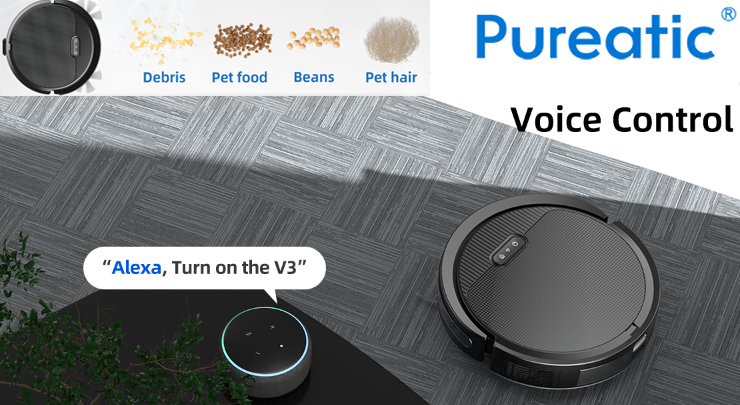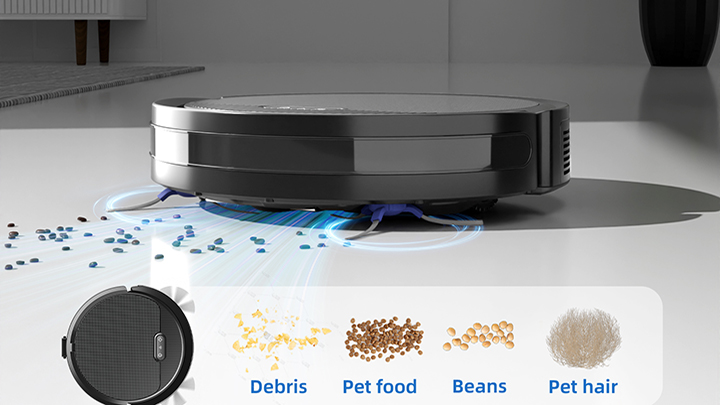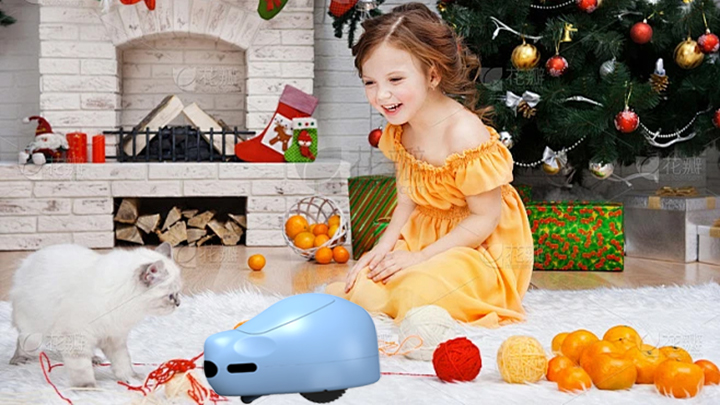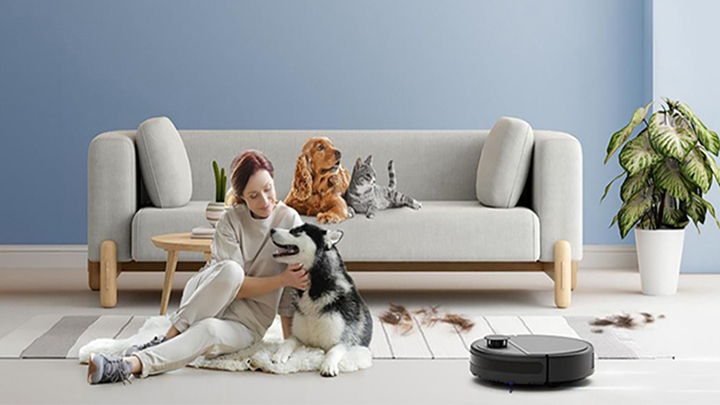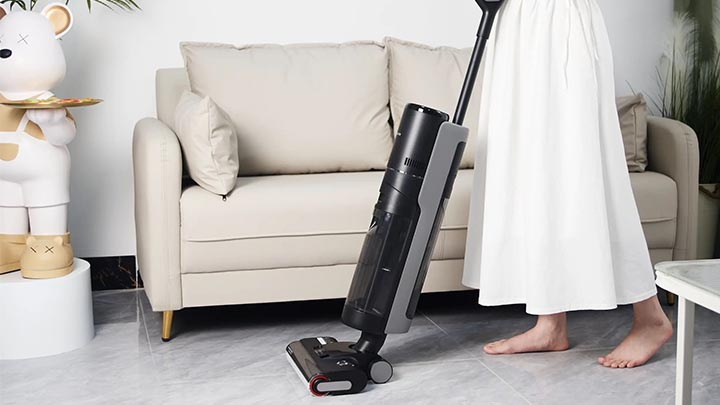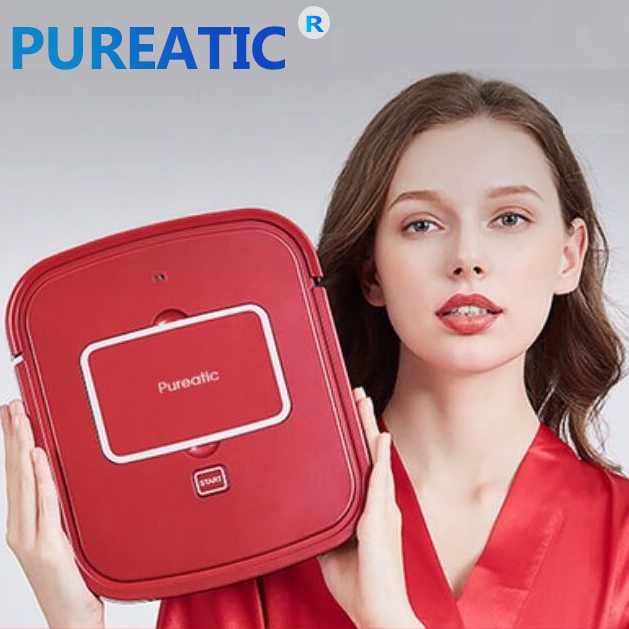How to Choose the Right Robot Vacuum Cleaner
As technology advances, robot vacuum cleaners have become essential tools for modern households. They save time, effort, and energy by automating floor cleaning, allowing you to focus on other tasks. However, with so many options available on the market, choosing the right robot vacuum can be challenging. Here's a comprehensive guide to help you select the best one for your needs.
1. Consider Your Floor Type
The type of flooring in your home significantly affects which robot vacuum will work best. Some models are better suited for specific surfaces:
- Hardwood and Tiles: Most robot vacuums handle hard floors well, but models with soft brushes or mop functions can prevent scratches and improve cleaning efficiency.
- Carpets and Rugs: Look for models with strong suction power (measured in Pascals or Pa) and a rotating brush to remove dirt embedded in carpet fibers. Some advanced models also detect carpeted areas and automatically increase suction.
- Mixed Surfaces: If you have a combination of carpets and hard floors, choose a model that can adapt to different surfaces automatically.
2. Suction Power and Cleaning Performance
Suction power determines how effectively the vacuum picks up dirt, dust, and pet hair. Higher suction power is especially important for carpets and homes with pets. Most robot vacuums have suction power ranging from 1,000 Pa to 3,000 Pa or more. Higher suction power usually means better cleaning performance but may also lead to more noise and shorter battery life.
3. Battery Life and Charging Efficiency
Battery life is crucial, especially for larger homes. Most robot vacuums offer between 60 and 120 minutes of runtime on a full charge. Some models can return to their docking station automatically to recharge and then resume cleaning from where they left off. Consider the following:
- Small Apartments: 60-90 minutes of battery life is usually sufficient.
- Larger Homes: Opt for a vacuum with at least 120 minutes of runtime or one that can recharge and resume.
4. Navigation and Mapping Technology
Modern robot vacuums use various technologies to navigate your home efficiently:
- Basic Models: Use random navigation patterns, which may miss some spots or take longer to clean.
- Advanced Models: Use laser (LiDAR) mapping, cameras, or infrared sensors to create a detailed map of your home. These vacuums clean more methodically, avoid obstacles, and cover all areas effectively.
- Virtual Barriers: Some models allow you to set virtual no-go zones or boundaries via an app, preventing the vacuum from entering certain areas.
5. Dustbin Capacity
The dustbin size affects how often you need to empty the vacuum. Smaller bins (around 0.3 liters) require frequent emptying, especially in homes with pets or lots of debris. Larger bins (0.6 liters or more) reduce maintenance time. Some high-end models also feature self-emptying bins, which transfer dirt to a larger container in the charging dock.
6. Smart Features and Connectivity
Many robot vacuums come with smart features that enhance convenience:
- App Control: Allows you to start, stop, schedule, and monitor cleaning sessions from your smartphone.
- Voice Control: Integration with smart home systems like Amazon Alexa or Google Assistant lets you control the vacuum using voice commands.
- Remote Control: Useful for basic functions if you prefer not to use an app.
- Cleaning Reports: Some models provide detailed cleaning reports and maps to show which areas have been cleaned.
7. Noise Level
Robot vacuums can be noisy, especially those with powerful suction. If noise is a concern, look for models designed to operate quietly (under 60 decibels). Many vacuums also offer "quiet modes" for less intrusive cleaning sessions.
8. Maintenance and Replacement Parts
Regular maintenance ensures the vacuum performs well over time. Consider the following factors:
- Filter Types: HEPA filters are ideal for homes with allergies, as they trap fine dust particles and allergens.
- Brushes: Check if the brushes are easy to remove and clean. Some models have tangle-free brushes that prevent hair from getting stuck.
- Replacement Parts: Ensure that spare parts like filters, brushes, and batteries are readily available and reasonably priced.
9. Size and Design
The size and shape of the vacuum affect its cleaning efficiency:
- Height: Low-profile models (under 3 inches) can easily clean under furniture.
- Shape: Round vacuums are common, but D-shaped models are better at cleaning corners and edges.
10. Budget Considerations
Robot vacuums are available at various price points, from budget-friendly options to high-end models:
- Budget Models ($100-$300): Basic navigation, limited suction power, and fewer smart features.
- Mid-Range Models ($300-$600): Better suction, improved navigation, and smart features like app control.
- Premium Models ($600 and above): Advanced mapping, self-emptying bins, mopping functions, and integration with smart home devices.
Conclusion
Choosing the right robot vacuum cleaner involves considering your home’s layout, floor type, and specific needs like pet hair removal or smart home integration. By evaluating factors such as suction power, navigation technology, battery life, and maintenance requirements, you can find a model that will keep your home clean and save you valuable time. Investing in a quality robot vacuum can transform your cleaning routine, making household maintenance effortless and more efficient.

